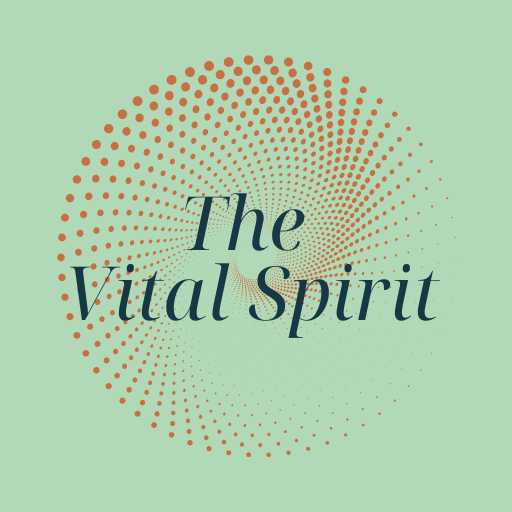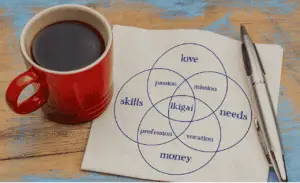To be embodied is to learn to be fully present and comfortable in your own body.
~ Camille Barrios on why empaths struggle
Over the years, I have written about the challenges empaths have being embodied. I’ve talked about how it can be hard to keep our awareness in our bodies because of the noise of other people’s emotions and sensations as well as our own physical aches and pains.
I explained the part about our bodies being noisy with other people’s energy before, I thought I would talk about the empath’s higher than average likelihood of having some kind of chronic illness.
Why Empaths Struggle Physically
Neurodivergent people have differences in their nervous system, brains, and bodies that make it much more likely that have one or more autoimmune conditions, have pain in their joints and muscles, and struggle with allergies and asthma.
Back when I worked in tech, I remember learning that the reason the newer computers crashed more frequently was because their processors were so fast that when running older software that wasn’t optimized for that extra speed very often caused that speedy processor to glitch.
Why? It was too sensitive, too alert, and too precise. Older processors didn’t notice or react to older software because they were speaking to each other at the same speed.
An empath’s processor is very fast and very sensitive to stimuli. The current software or living environment is slower and less clean than the empath’s processor requires. This causes our whole system to glitch.
How the Glitch Affects Empaths
This metaphor stuck with me because it felt familiar. My own body felt like it was constantly glitching—reacting to everything, from fluorescent lights and synthetic fragrances to stress, caffeine, and sometimes even joy. I would feel overstimulated, drained, wired and tired at the same time. Sound familiar?
Empaths and neurodivergent folks often live with bodies that seem to be in a state of constant overreaction. And it’s not in their heads. It’s in their nervous systems, immune systems, and guts. Research is catching up to what we’ve known intuitively for a long time: when you’re built to detect and respond to the emotional and energetic climate around you, your body is always on. It doesn’t get much downtime.
That level of hyperawareness and constant adaptation comes with a cost. For many, that cost shows up as autoimmune diseases like Hashimoto’s or lupus. For others, it’s Mast Cell Activation Syndrome (MCAS), where the body basically starts reacting to things that should be harmless. Postural Orthostatic Tachycardia Syndrome (POTS) is another common one—where standing up makes your heart rate spike and blood pressure drop, leaving you dizzy or fatigued. Toss in joint hypermobility, gut issues like IBS or heartburn, histamine intolerance, and disordered sleep… and you start to get a picture of how glitchy the system can become.
This isn’t a coincidence—it’s a feature of a body designed for deep sensitivity, running in an environment that isn’t made for it. Your sensitive system is doing exactly what it’s built to do—it’s alerting you to the imbalance. It’s saying, “Hey, this isn’t working for me.”
The Speed of Life and Being Embodied
One of the hardest things for empaths is staying in the body.
I’m talking about being fully embodied—feeling your body from the inside out, paying attention to what it’s saying. But for many of us, this feels impossible because the body is loud. It’s constantly reacting: the lights are too bright, the music’s too loud, someone’s energy feels off. Your body sends signals: “This is too much.” “I want out.”
But when you’re a child, you often can’t leave. You can’t say no. So you do the only thing that makes life manageable—you leave your body instead.
You float above. You dissociate. You stop listening to your body’s cues because they’re inconvenient or overwhelming. And eventually, you stop knowing how to hear them at all.
This becomes your default. And then, as an adult, you realize you’re living from the neck up. Maybe you start having chronic pain, fatigue, or anxiety and wonder, What’s wrong with me? But often, it’s not brokenness—it’s disconnection. And healing begins with reconnection.
This isn’t a quick fix. It takes time. It takes nervous system regulation and learning how to trust your body again. But it’s possible. And it’s one of the most important things you can do as an empath—because when you return to your body, you return to your power.
What This Means for Healing
If you’ve struggled with being in your body, I want you to know: your body isn’t broken. It’s highly specialized. It was built for attunement, for noticing subtleties, for connection. But it’s likely been running on a system that wasn’t built for it—trying to process chronic stress, environmental toxins, emotional labor, and the noise of a too-fast, too-loud world.
Healing for empaths isn’t just about reducing symptoms—it’s about rewriting the software. We need practices and environments that match our system’s sensitivity: slow, intentional, and attuned to our needs. That might look like energy hygiene, boundaries that prioritize your nervous system, food that doesn’t inflame your gut, or working with practitioners who understand trauma and sensitivity.
And maybe, most importantly, it means not judging your body for being reactive. Your sensitivity is not a flaw. It’s feedback. It’s your body asking for care, for quiet, for recalibration.
You can learn to work with your system instead of against it. And when you do, your body becomes a trusted partner instead of a constant battleground.
Coming Back to the Body: Gentle Ways to Begin
If you’re realizing that you’ve been hovering just above your body for years (maybe decades), you’re not alone. And you don’t have to force your way back in. This isn’t about toughing it out—it’s about making your body feel like a safe place to return to.
Here are a few small ways to begin that reconnection:
Start with the breath. Put your hand on your chest or belly and just notice the rise and fall. No need to change it. Just witness your body breathing.
Feel your feet. Grounding can be as simple as pressing your feet into the floor, wiggling your toes, or walking barefoot on the earth. It reminds your nervous system: I am here. Try this guided grounding practice.
Ask your body a question. Try something like, “What do you need right now?” Then listen—gently and without judgment—for the answer.
Create quiet. Spend a few minutes in silence each day. Turn down the volume of the world so you can hear yourself more clearly.
Practice consent with yourself. If something feels too intense or too much, pause. Embodiment isn’t a punishment. You’re allowed to go slowly.
These small practices add up. You don’t need to dive headfirst into every sensation—just dip a toe into presence. Over time, you build trust with your body. You learn that it isn’t the enemy. It’s a wise, sensitive companion that’s been trying to keep you safe all along.
You deserve to live in a body that feels like home. And yes, it’s possible.
Ready to Take the Next Step?
If this blog stirred something in you—if you’re feeling the weight of disconnection, overwhelm, or the ache of being too much for this world—I want to invite you to something special.
Join me for Channeling Collective Grief and Rage into Purpose,
a community circle for empaths navigating this time of upheaval.
📍 Online, inside the Aligned Journeys Community
🗓️ April 29, 2025
⏰ 4:00 PM Pacific
💸 $20 suggested donation, PayPal (laura@thevitalspirit.net), Venmo (@Laura-The-Vital-Spirit)
This is a space to be witnessed. To feel without fixing. To gather with other sensitive souls who are exhausted from holding it all in. We’ll explore how grief and rage—when honored and moved through—can become fuel for purpose and healing.
You don’t have to carry it all alone. Let’s sit together and remember what it means to feel, to be, and to move forward as empaths with power and clarity.







